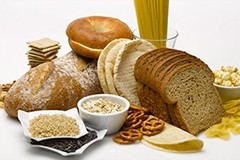Don’t raise threshold for gluten-free food, says Australian specialist

Since 1995, the GF standard in Australia and New Zealand has mandated that for a food product to be allowed “gluten free” labelling there had to be “no detectable gluten.”
However, both Coeliac Australia and the Australian Food and Grocery Council (AFGC) have lobbied Food Standards Australia New Zealand (FSANZ) to increase the threshold to less than 20 parts per million (ppm), primarily to have more GF foods available in the market.
The chair of Coeliac Australia’s medical advisory had expressed the reasons for its stance in a public letter, stating that the limits of what is “detectable” had been falling as testing methods have continued to be refined.
“The present sensitivity of the test is 3ppm, having fallen from 30ppm a decade ago. This represents a detection level of 3mg in 1kg of food…this makes it is increasingly difficult for manufacturers to ensure foods remain below this falling standard,” said Dr Jason Tye-Din.
“There is the real possibility that no food will be able to comply with a detection level of, say 1ppm. This will have the effect of limiting suitable food choices for patients with coeliac disease and compromising their treatment,” he said.
However, Dr Geoff Forbes, gastroenterologist at the Royal Perth Hospital and clinical professor at the University of Western Australia, told FoodNavigator-Asia that modifying the existing standard to 20ppm would be a major risk as it works from a food safety and health point of view.
“Australia and New Zealand’s GF standard is the tightest internationally. And there is a good range of foods available for patients with coeliac disease,” he said. “It is working.”
One size does not fit all
Forbes, who has also written a letter to the Medical Journal of Australia voicing his opinion, cautioned that increasing the threshold limit to 20ppm would be a risk because it would inevitably increase overall gluten ingestion in a GF diet.
“And for an undetermined proportion of coeliac disease patients, this will lead to adverse health, and hence additional healthcare costs. This is because we know that the amount of gluten that coeliac patients can tolerate varies,” he said.
Forbes pointed out that there have been reports suggesting that an alternative stance could be taken - either stating the precise level of gluten on the food label, or setting two levels: less than 20ppm, and “no detectable gluten.”
“But, having precise levels on food products is problematic, for this is a confusing outcome for consumers. It is difficult enough for health experts to understand the issues at play, and the general consumer relies on a product labelled gluten free,” Forbes said. “Moreover, variable labelling removes the gluten-free label, which is recognised internationally, and also it is unknown what a safe level of gluten is.”
Forbes cited a US FDA safety report from 2011, which concluded that gluten levels in food of less than 1ppm are required to protect the greatest number of patients with coeliac disease.
“To have two levels is again confusing for the consumer. If Coeliac Australia are correct in stating that truly gluten-free foods will disappear as laboratory testing reaches new lows of, for example, 0.1ppm, then the gluten free standard will revert to less than 20ppm in any case,” he said.
'Manifestly wrong'
Forbes also came out strongly against Tye-Din’s letter referring to the Catassi Paper, which is believed to be the first randomised controlled double-blind study aimed at determining a safe threshold for coeliac patients.
“The study was of only three groups of 13 patients, and the patients were in part a selective group that may have been less sensitive to gluten,” Forbes pointed out.
“And of those who received the amount of gluten that Coeliac Australia state is safe, one had a symptomatic relapse of coeliac disease and several showed worsening microscopic changes in their small bowels,” he said.
“While the authors of this research made the correct conclusion that the ingestion of contaminating gluten should be kept lower than 50mg per day in the treatment of coeliac disease, the paper has been interpreted by the chair as showing that 10mg gluten per day is safe [10mg in 500g food=20 ppm]. This is manifestly wrong.”
Requests for comments from both the AFGC and Coeliac Australia went unanswered as of deadline.
The current standard is working
Forbes, however, resisted from defining a best possible threshold for gluten content, given new food testing technology. However, he has put forward one suggestion to Coeliac Australia that would allow GF foods an increase in “measurable” gluten, for example to less than 1-3ppm.
“This effectively maintains the status quo, in contrast to an increase in permissible gluten from undetectable to less than 20 ppm. However, it is possible that even this suggestion of maintaining the status quo may ultimately be proven not to be strict enough,” he said.
Forbes conceded that reducing the GF limit, as happened in Europe in 2009, Canada in 2011 and most recently in the US, can only be a good undertaking for patients with coeliac disease.
“However, with an established GF standard lower that that elsewhere, to increase the GF threshold in Australia and New Zealand is an internationally untested intervention, without any safety evidence to support this,” he said.












